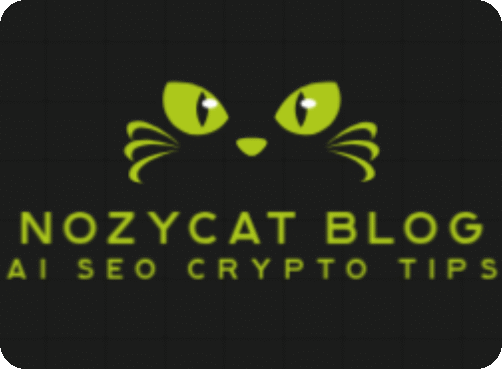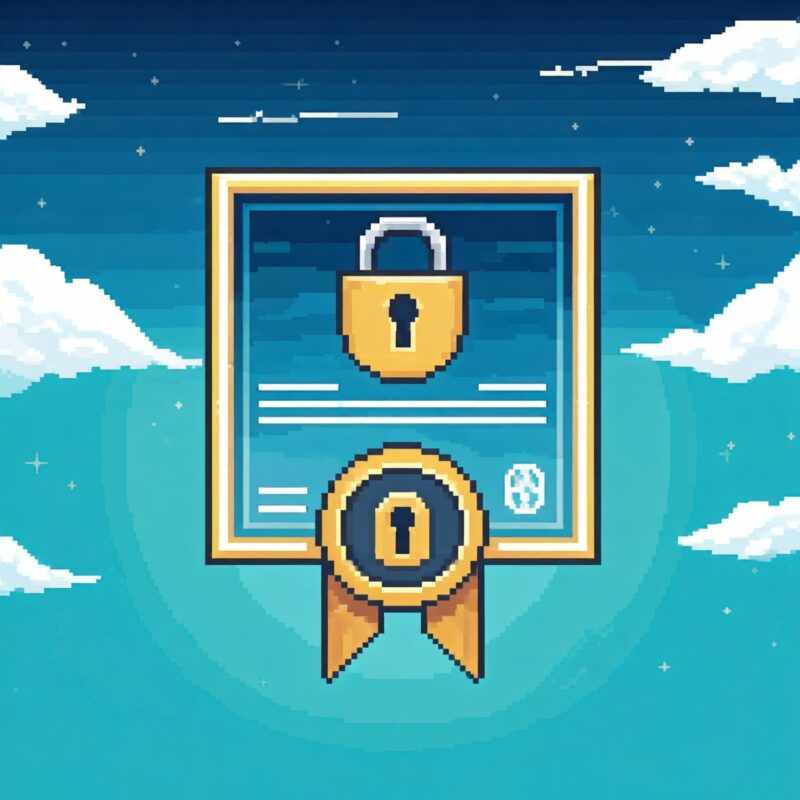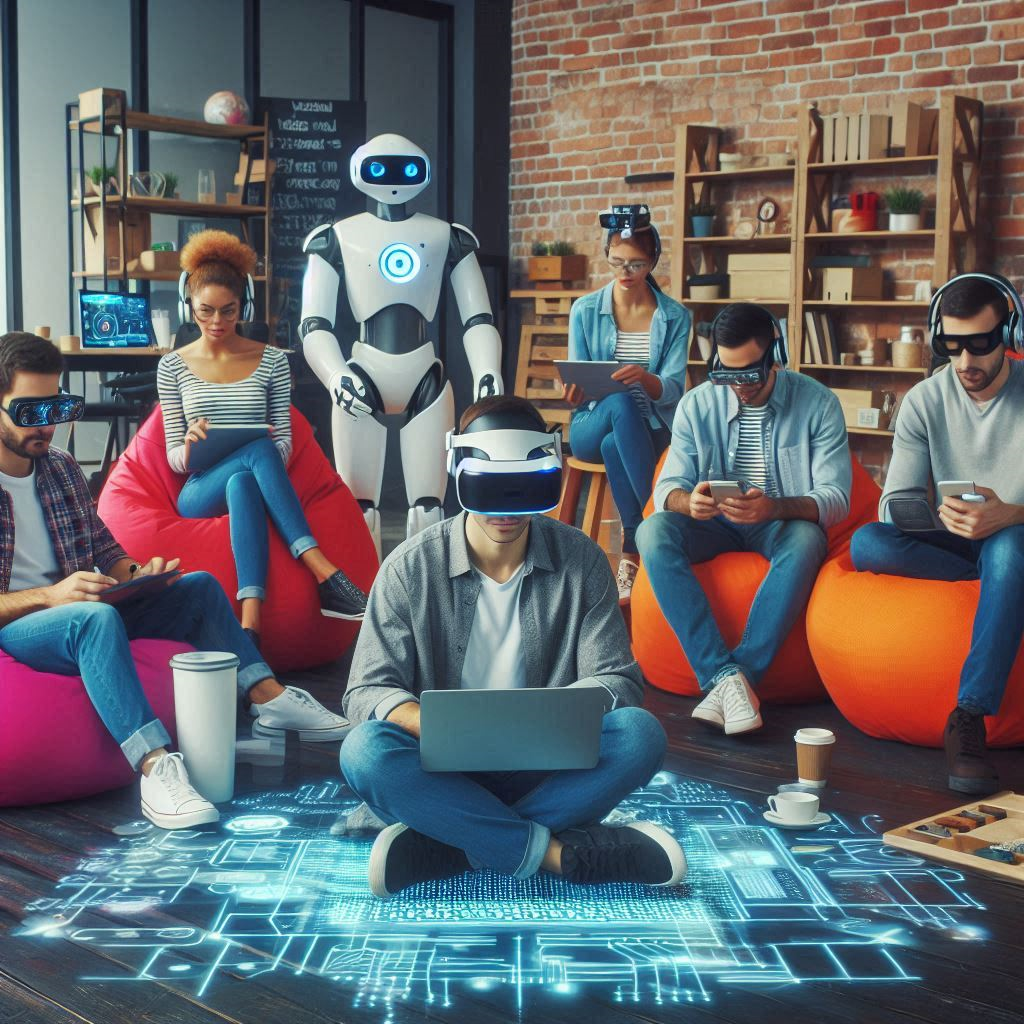NFTs (Non fungible Tokens): Are these currencies or what?
An NFT, or non-fungible token, is a unique digital asset recorded on a blockchain. It represents ownership of something, whether it’s digital or a representation of a physical item. Think of it like a digital certificate of authenticity. So what will be the NFT And its Future Usage.
Thank you for reading this post, don’t forget to subscribe!
Please support the blog by clicking ads and join the monetize programs , coming soon.
Key points about NFTs:
- Unique: Each NFT is one-of-a-kind, unlike cryptocurrencies which are fungible (interchangeable).
- Blockchain-based: NFTs are stored on a blockchain, a decentralized digital ledger, ensuring security and transparency.
- Diverse assets: NFTs can represent various things, including:
- Digital art
- Music
- Collectibles
- Virtual real estate
- Gaming items
- Tickets to events
- Ownership and value: Owning an NFT grants you verifiable ownership of the digital asset. The value of an NFT is determined by market demand and perceived worth.
How do NFTs work?
- Creation: An NFT is created by tokenizing a digital asset on a blockchain. This involves assigning a unique identifier to the asset. In the context of NFTs, “tokens” refer to the unique digital certificates that represent ownership of a specific asset on a blockchain. Each token is like a unique identifier that links the owner to the digital asset.
- Ownership: Once created, the NFT can be bought, sold, or traded on NFT marketplaces. The blockchain technology then makes records for the ownership history to ensure transparency.
- Verification: The blockchain’s decentralized nature makes it difficult to tamper with, providing a reliable way to verify the authenticity and ownership of an NFT.
Why are NFTs important?
- Digital ownership: NFTs offer a way to own and trade digital assets in a verifiable and secure manner.
- Creator economy: NFTs empower creators to monetize their work directly, bypassing traditional intermediaries.
- Innovation: NFTs are driving innovation in various industries, from art and music to gaming and real estate.
Remember: While NFTs offer exciting possibilities, it’s important to approach them with caution and conduct thorough research before investing.
Key points about NFT tokens:
- Unique: Each token is distinct, ensuring that every NFT is one-of-a-kind.
- Blockchain-based: Tokens are stored on a blockchain, a decentralized digital ledger, making them secure and transparent.
- Represent ownership: Owning an NFT token means you own the digital asset it represents.
- Transferable: Tokens can be bought, sold, or traded on NFT marketplaces.
- Verifiable: The blockchain records the ownership history of each token, providing proof of authenticity.
To summarize:
NFT tokens are the digital building blocks that enable the ownership and trading of unique digital assets on the blockchain.
They provide a secure and transparent way to verify ownership and facilitate transactions in the digital world.
How to buy and sell our created art with NFT?
Let’s say we have created a digital work or physical one (one from the list of NFT assets mentioned above) and want to claim its ownership and later be able to sell its copyrights. What should we do and how do we do the NFT trading?
Here’s a step-by-step guide on how to buy and sell your created art as NFTs:
1. Set up a Crypto Wallet:
- Choose a Wallet: Popular options include MetaMask, Coinbase Wallet, or Trust Wallet.
- Create an Account: Follow the wallet’s instructions to create an account.
- Fund Your Wallet: Purchase cryptocurrency (usually Ethereum or other compatible tokens) and transfer it to your wallet address.
2. Choose an NFT Marketplace:
- Research: Popular marketplaces include OpenSea, Rarible, SuperRare, and Foundation. Each has its own strengths and fees.
- Create an Account: Register on your chosen marketplace and connect your crypto wallet.
3. Prepare Your Artwork:
- Digital Format: Ensure your artwork is in a digital format suitable for NFTs (e.g., JPG, PNG, GIF, MP4).
- High Quality: Aim for high-resolution images to ensure a good presentation.
4. Mint Your NFT:
- Upload Artwork: Follow the marketplace’s instructions to upload your artwork.
- Set Details: Provide a title, description, and choose a selling method (fixed price or auction).
- Pay Minting Fees: Minting (or the process of circulating the newly created work into the market, just like new dollars) fees vary by marketplace and blockchain(the databases of the NFTs and crypto coins as well).
- Confirm: Review the details and confirm the minting process.
5. Promote Your NFT:
- Social Media: Share your NFT on social media platforms like Twitter, Instagram, and TikTok.
- Community Engagement: Join NFT communities and forums to connect with potential buyers.
- Marketing: Consider paid advertising or collaborations with influencers to reach a wider audience.
Buying an NFT:
- Create an Account: If you haven’t already, create an account on an NFT marketplace.
- Fund Your Wallet: Ensure your wallet has enough cryptocurrency to cover the purchase price and any fees.
- Browse Marketplaces: Explore different marketplaces to find NFTs that interest you.
- Select an NFT: Choose the NFT you want to buy and review its details, including price and creator.
- Complete the Purchase: Follow the marketplace’s instructions to complete the purchase using your crypto wallet.
Additional Tips:
- If you feel you need to replace your old wallet with a new current one, follow that line.
- Research: Stay informed about the latest NFT trends and market dynamics.
- Community: Engage with the NFT community to learn from others and get feedback on your work.
- Security: Protect your crypto wallet and be cautious of scams and phishing attempts.
- Patience: The NFT market can be volatile, so be patient and don’t expect immediate success.
- Experiment: Try different selling strategies and platforms to find what works best for you.
By following these steps and staying informed, you can successfully navigate the world of NFT art and potentially make a significant impact as a digital creator.
Sell your AI creations with NFT! Or not, Creative Venture
What happens to work created by AI? Is this considered free or copyrighted and can it be used with NFT or not valid to do so.
The intersection of AI and NFTs has opened up a new frontier for digital art. AI tools can generate stunning, unique images that can be minted as NFTs, offering a lucrative opportunity for artists and collectors alike.
Here’s a step-by-step guide on how to use AI-generated art for NFTs:
1. Choose an AI Art Generator:
- Popular Options:
- Midjourney
- Stable Diffusion
- Dall-E 2
- NightCafe
- Artbreeder
- How to Use:
- Input text prompts to guide the AI’s image generation process.
- Experiment with different prompts and styles to create unique pieces.
- Refine your images through post-processing techniques.
2. Select an NFT Marketplace:
- Popular Options:
- OpenSea
- Rarible
- SuperRare
- Foundation
- Consider:
- Platform fees
- Community size
- Target audience
3. Prepare Your AI Art for Minting:
- Image Format: Ensure your art is in a suitable format (e.g., JPG, PNG).
- Metadata: Create a detailed description of your artwork, including its concept, inspiration, and any special features.
- Royalty Fees: Set a royalty percentage to receive ongoing earnings from future sales of your NFT.
4. Mint Your NFT:
- Connect Your Wallet: Connect your cryptocurrency wallet (e.g., MetaMask) to the NFT marketplace.
- Upload Your Art: Follow the platform’s guidelines to upload your AI-generated image and metadata.
- Pay Minting Fees: Pay a fee to the blockchain network to record your NFT on the blockchain.
5. Promote Your NFT:
- Social Media: Share your NFT on platforms like Twitter, Instagram, and TikTok.
- NFT Communities: Join online communities to connect with other NFT enthusiasts.
- Marketing: Use targeted marketing strategies to reach potential buyers.
Ethical Considerations:
- Originality: While AI tools can generate unique images, it’s important to be transparent about the use of AI in your creative process.
- Copyright: Ensure that you have the necessary rights to use any copyrighted material in your prompts or generated images.
- Community Standards: Adhere to the community guidelines of the NFT marketplace you choose.
By following these steps and considering the ethical implications, you can successfully leverage AI-generated art to create valuable NFTs and build a thriving career in the digital art world.
Would you like to know more about specific AI art tools or NFT marketplaces?
Use cases for the NFTs
Here are some of the top use cases for selling NFTs:
Digital Art and Collectibles:
- Unique Digital Art: Artists can sell their digital creations as unique NFTs, providing proof of ownership and authenticity.
- Collectibles: Digital collectibles like trading cards, virtual land, or in-game items can be tokenized as NFTs.
- Music and Video: Musicians and filmmakers can sell limited-edition digital albums, music videos, or film clips as NFTs.
Gaming:
- In-Game Items: Virtual items like weapons, skins, or characters can be owned and traded as NFTs.
- Play-to-Earn: Players can earn NFTs as rewards for completing in-game challenges or achievements.
Real Estate:
- Virtual Real Estate: Digital land in virtual worlds can be bought and sold as NFTs.
- Real-World Property: NFTs can represent ownership of physical property, providing a secure and transparent way to transfer ownership.
Fashion and Luxury Brands:
- Digital Fashion: Brands can sell digital clothing or accessories that can be worn by avatars in virtual worlds.
- Limited Edition Items: NFTs can be used to authenticate and sell limited-edition physical products.
Social Tokens:
- Community Building: Creators can issue social tokens to their communities, granting access to exclusive content or experiences.
- Funding: Projects can raise funds by selling NFTs to their supporters.
Other Potential Use Cases:
- Ticketing: NFTs can be used to represent tickets to events, providing a secure and transferable way to attend.
- Certification: NFTs can be used to certify the authenticity of physical goods, such as wine or art.
- Identity Verification: NFTs can be used to verify a person’s identity, providing a secure and tamper-proof way to store personal information.
It’s important to note that the NFT market is still evolving, and new use cases are emerging all the time. As blockchain technology continues to develop, we can expect to see even more innovative applications of NFTs in the future.
Challenges of adopting NFT in real life
Here are three key challenges of adopting NFTs in real life:
- Technological Barriers:
- Complexity: The underlying technology of blockchain can be complex for many users, making it difficult to understand and navigate.
- Scalability: Many blockchain networks, like Ethereum, face scalability issues, leading to high transaction fees and slow processing times.
- Security Risks: NFTs are susceptible to cyberattacks and scams, requiring robust security measures.
- Regulatory Uncertainty:
- Lack of Clear Regulations: The regulatory landscape for NFTs is still evolving, leading to uncertainty and potential legal risks.
- Tax Implications: The tax implications of buying, selling, and holding NFTs can be complex and vary by jurisdiction.
- Intellectual Property Rights: Issues related to copyright, trademark, and other intellectual property rights can be challenging to navigate in the NFT space.
- Environmental Impact:
- Energy Consumption: The energy consumption of certain blockchains, like Ethereum, has raised concerns about their environmental impact.
- Carbon Footprint: The process of minting and trading NFTs can contribute to carbon emissions.
- Sustainability: While efforts are being made to improve the energy efficiency of blockchain technology, it remains a significant challenge.
Is NFT a future or not?
Of Course yes, what are you talking about. With all that said, NFTs have a good future too, especially now in this era of the US and the world of digital economy.
Conclusion
In brief, if you understand the different aspects of NFT and how it is made and works, you can now buy or sell NFTs and avoid the challenges that come with the bargain. Everything needs to be learned and experimented at first till you master the work. So learn and test your tools very well and get into the new future with confidence. Good luck and best wishes.
Don’t forget to like and follow my blog for more future posts about more interesting ventures.
More resources
- Non-Fungible Tokens, Ownership of Digital Objects, and Copyright | Authors Alliance
- NFT Trading Cards Explained: What Are Digital Trading Cards?
- NFTs in the music industry – trends, functions, and typical copyright issues – Bird & Bird
- NFT and Gaming Industry: the future of in-game assets | Zakeke
- What is a Play-to-Earn NFT Game?
- Understanding Crypto Wallets: A Step-by-Step Guide | Transfi
- How to Buy and Sell NFTs: The Ultimate Guide
- Can JPEGs Be NFTs? – NFT Club
- A Step-by-Step Guide To Selling NFT Art In 2023 | Mudrex Learn
- How Much Does it Cost To Create an NFT: Fees & Minting Guide 2024






Leave a Reply